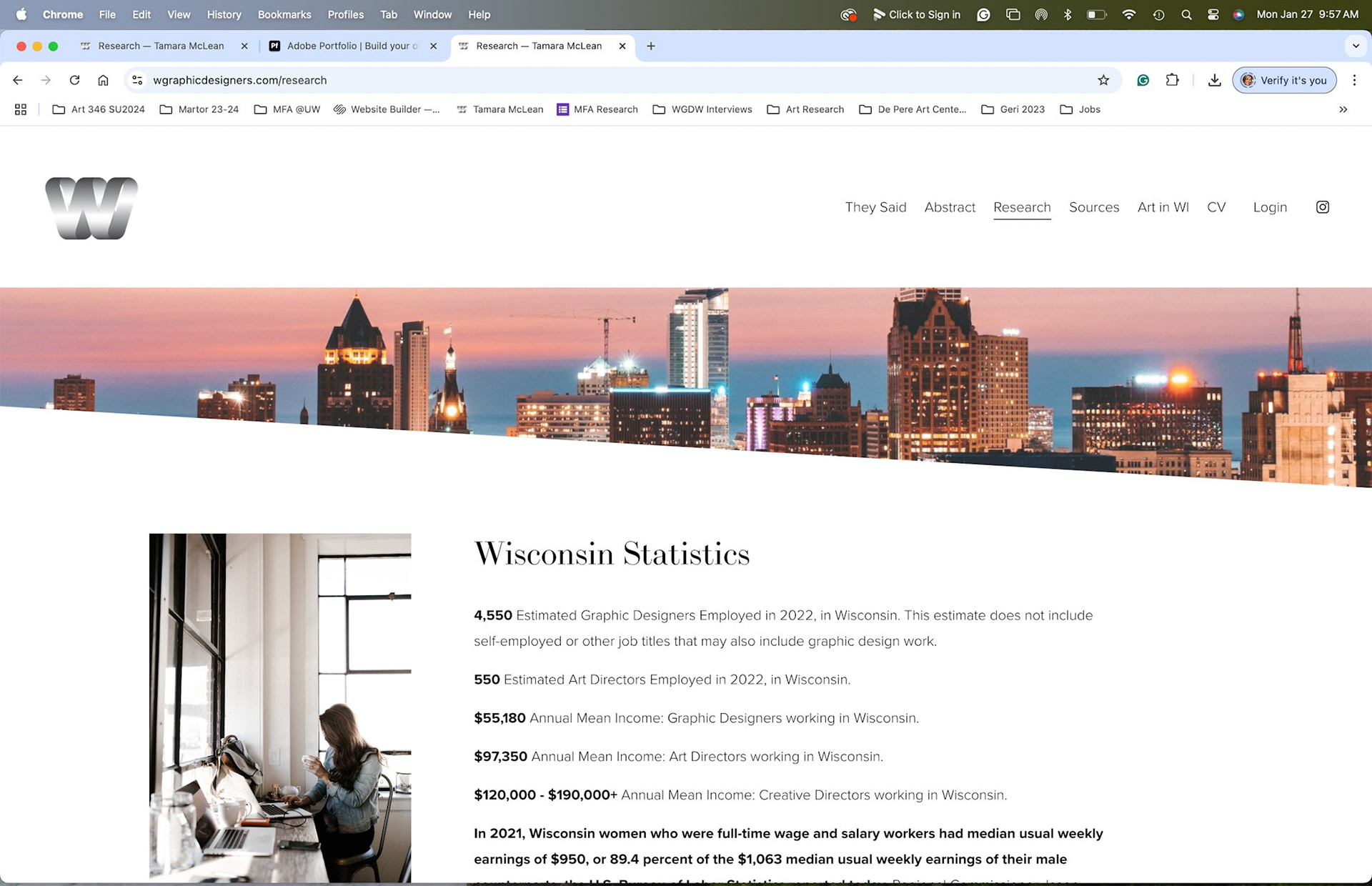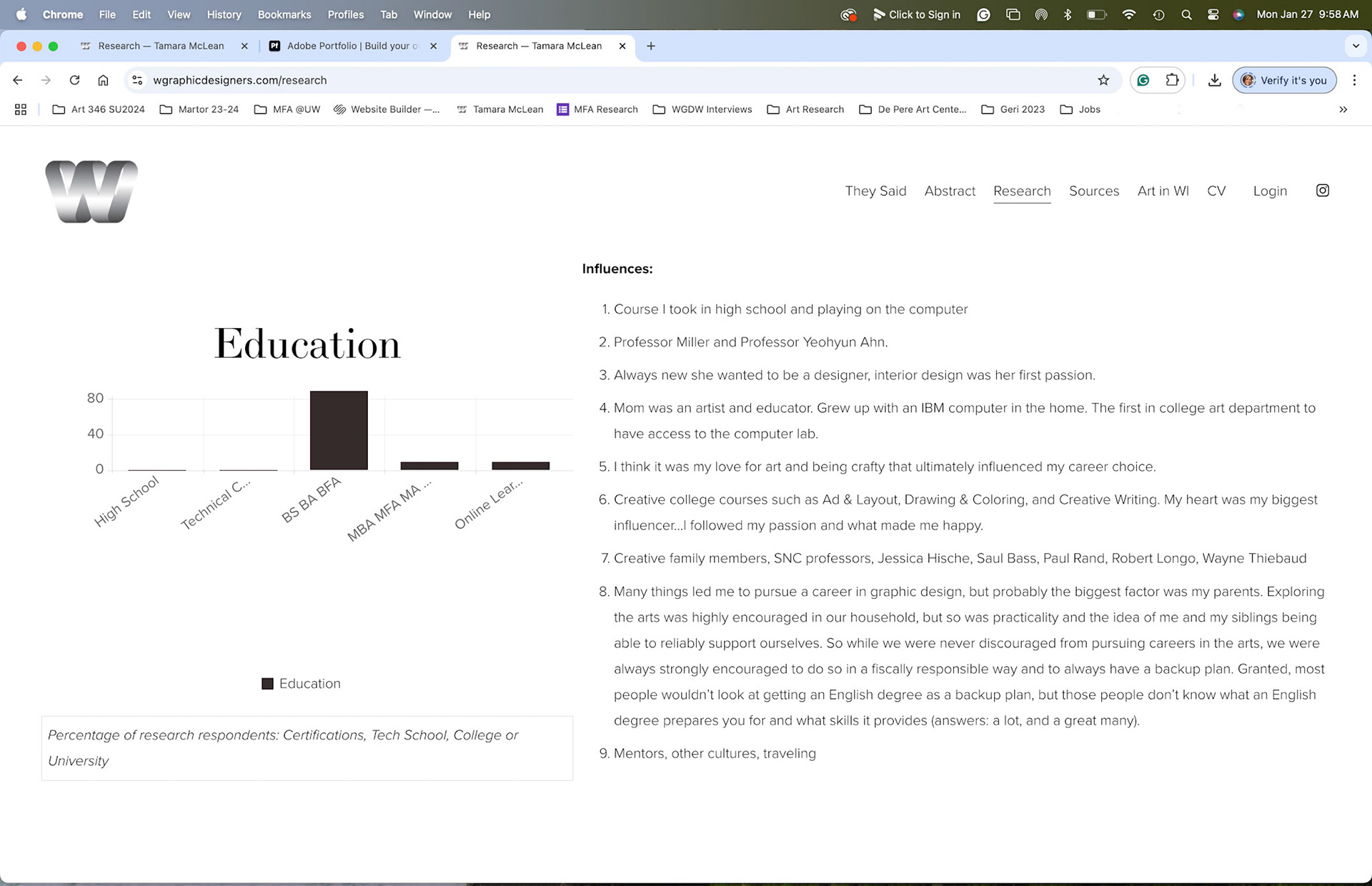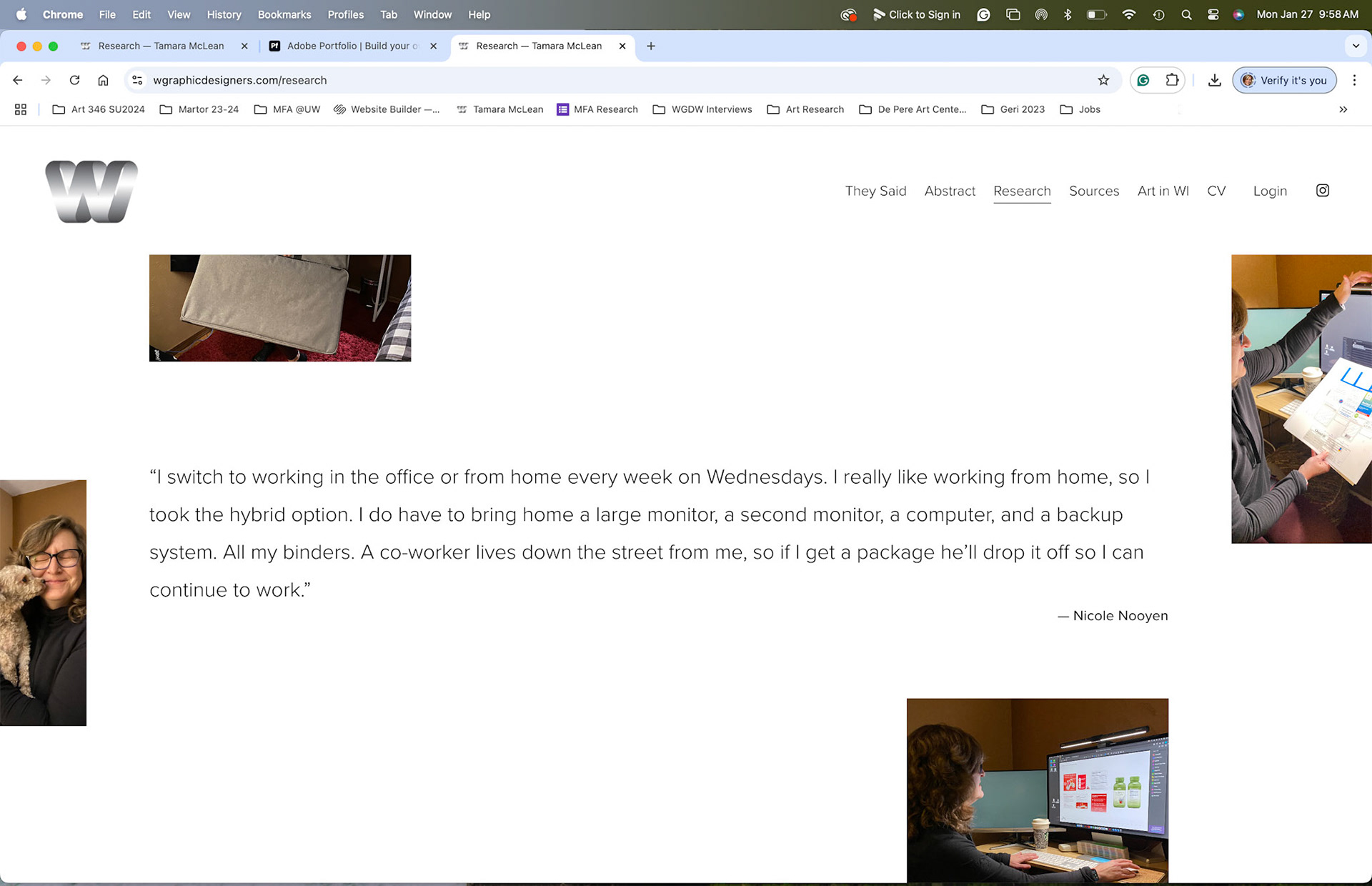Women’s role in Wisconsin’s graphic design history since 1989.
Principal Investigator, Interdisciplinary Artist: Tamara McLean
2025 MFA Fellowship Candidate, Graphic Design Program, Art Department, UW-Madison
2025 MFA Fellowship Candidate, Graphic Design Program, Art Department, UW-Madison
ABSTRACT
Women's role in Wisconsin's graphic design history since 1989 is the focus of this research.
Women's role in Wisconsin's graphic design history since 1989 is the focus of this research.
The Wisconsin women's graphic design unwritten history and contributions to economic success to fine art academic culture and professional communities are unrecorded. In the United States, specifically in Wisconsin, before 1989, Graphic Design careers were dominated by men working in printing companies. Since the Heidelberg Platen Press was introduced in 1914 and manufactured between 1923 and 1985, printing has been a physically demanding, highly-paid union job. In 1961, Letraset released a dry transfer type that democratized communications. On January 24, 1984, founder and CEO Steve Jobs debuted the first Macintosh Computer in Cupertino, California. The computer was now accessible to the masses, and desktop publishing was launched as a billion-dollar industry. This research focuses on Wisconsin's graphic design history and the role women have played. Each medium: package, visual merchandising, environmental graphic design, branding, print collateral, and web, provides a visual experience that is narrative, interactive, and tangible. This original website design tells the stories of Wisconsin women in graphic design history. A diverse group of women designers will be sought. The website showcases women's experiences working alongside men in the printing, advertising, education, freelance, in-house design departments, and design agencies throughout Wisconsin. This website includes interviews with graphic designers on a variety of career paths. Special thanks to Assistant Professor Ahn for her advisement.
Graduate Committee: Associate Professor Sarah FitzSimons, Chair, Assistant Professor Taekyeom Lee, Assistant Professor Michael Velliquette, Professor Dr. Faisal Abdu’Allah, Professor Fred Stonehouse
Graduate Committee: Associate Professor Sarah FitzSimons, Chair, Assistant Professor Taekyeom Lee, Assistant Professor Michael Velliquette, Professor Dr. Faisal Abdu’Allah, Professor Fred Stonehouse
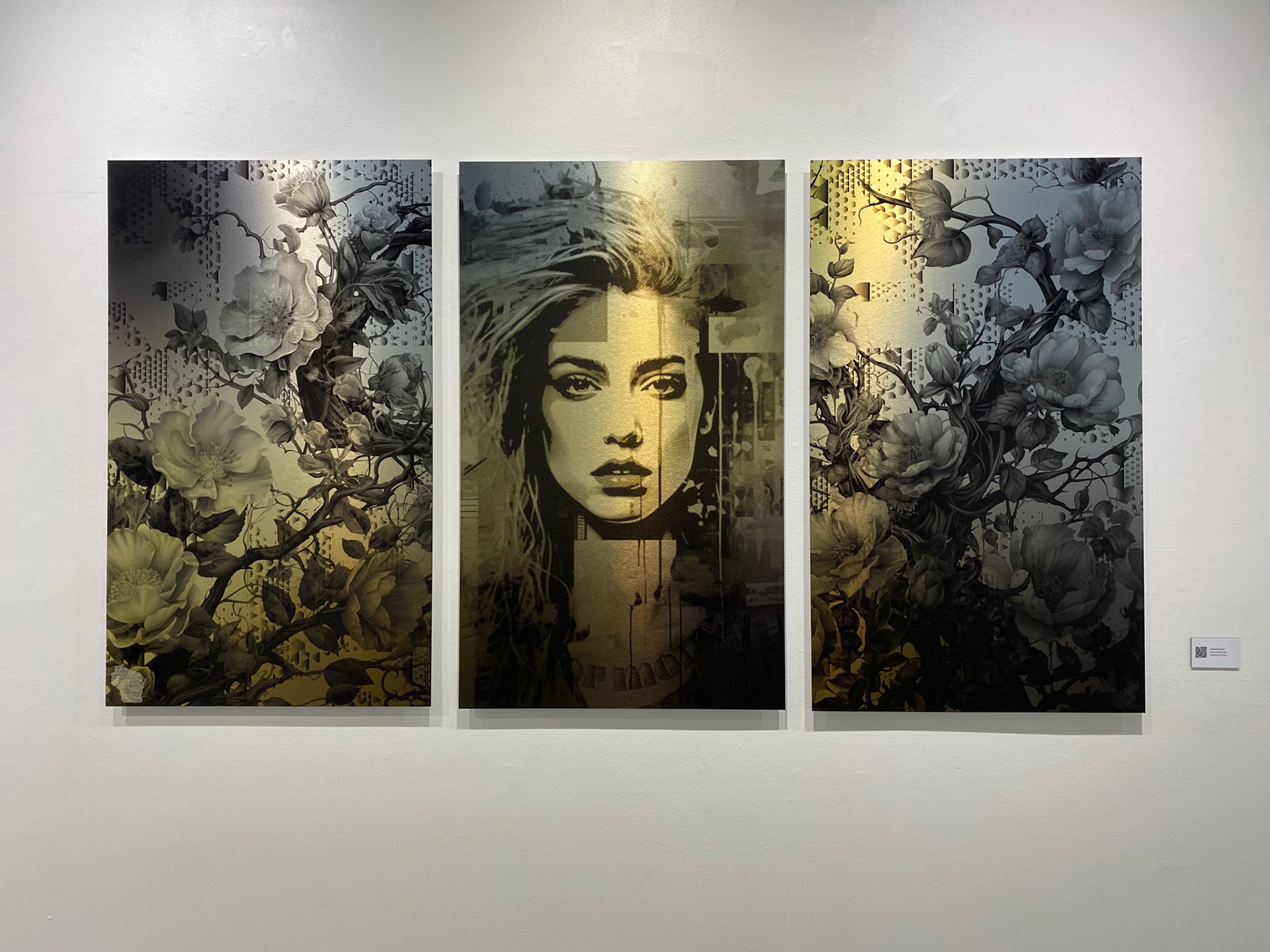
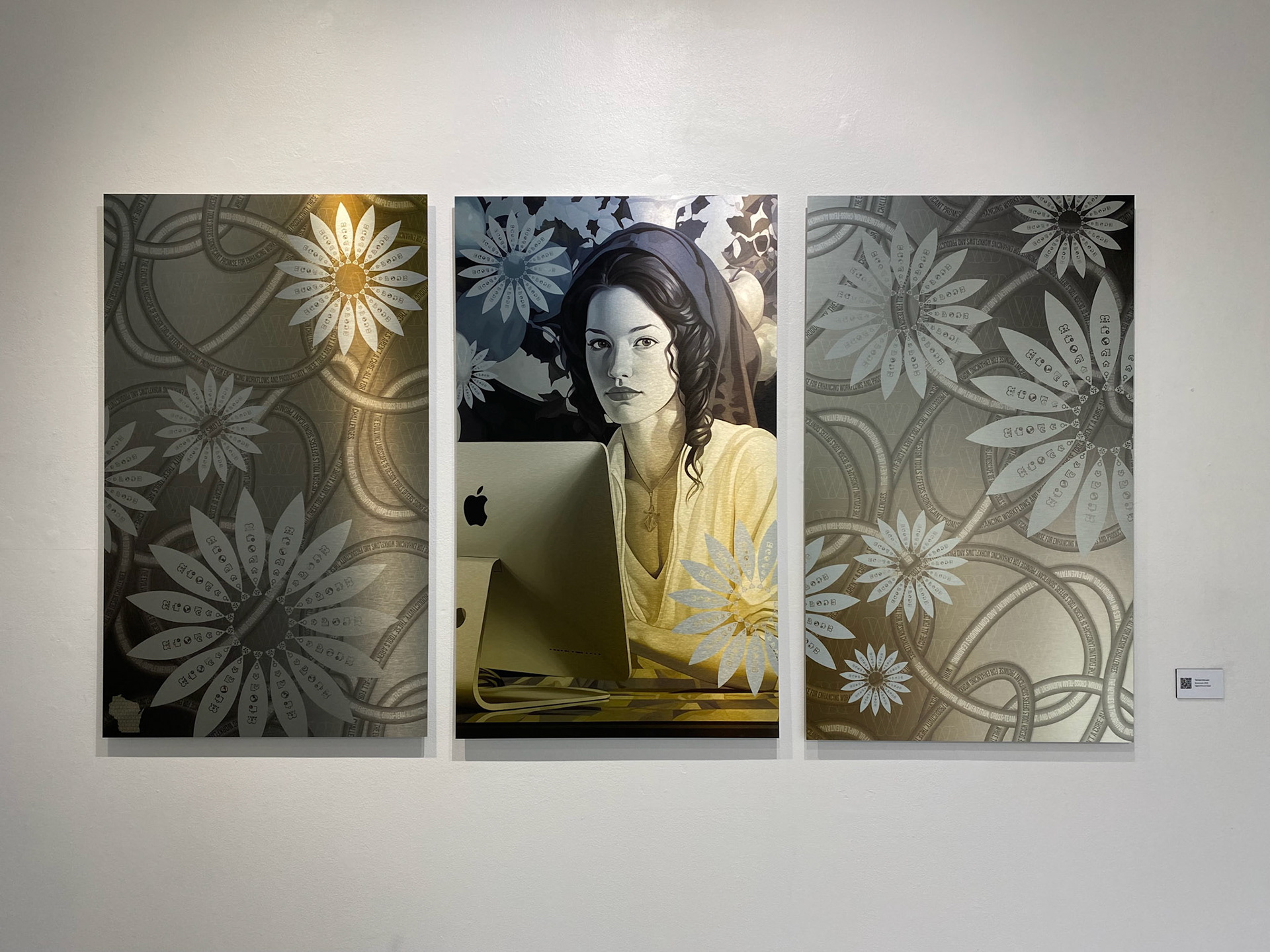
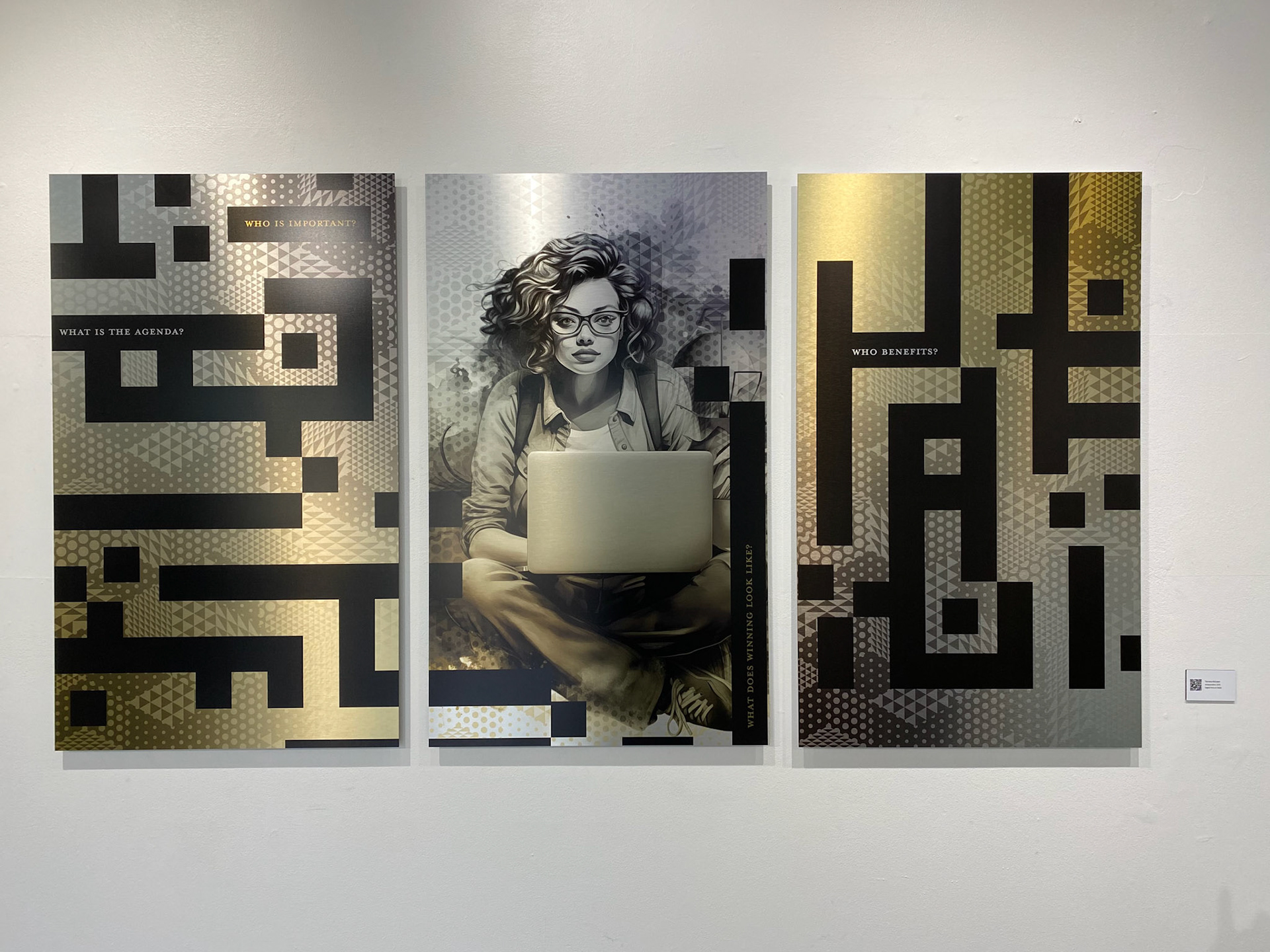
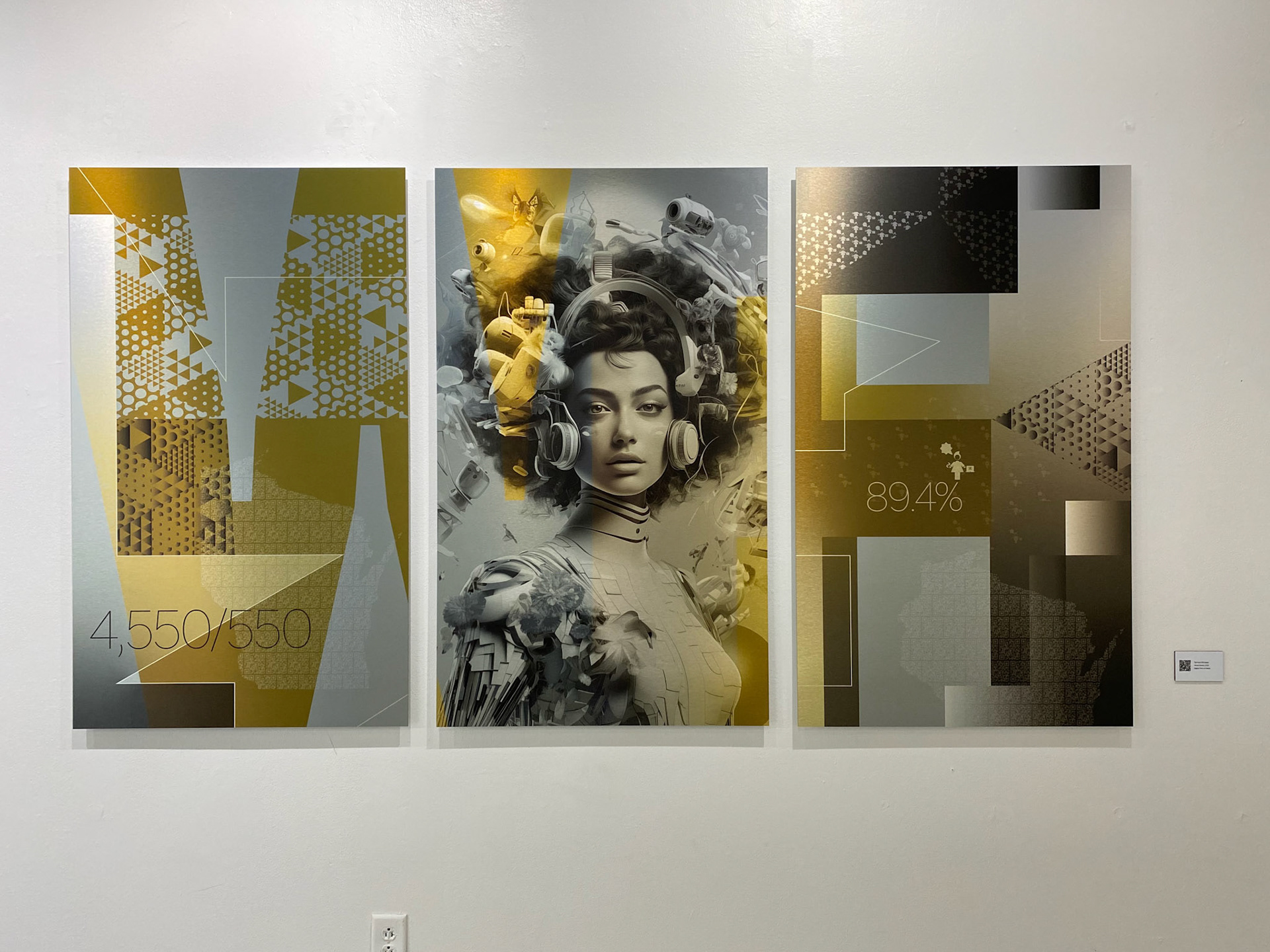
They Said
Artist Statement
“They Said” investigates the experiences of women graphic designers in Wisconsin to create a captivating and thought-provoking installation within the context of environmental graphic design. The work seeks to bridge the intersection of technology and visual expression, redefining the boundaries of creativity and pushing the limits of traditional graphic design.
Co-creating with computer algorithms, the artist collaborates in a symbiotic dance where human intuition meets machine ingenuity. Through this process, the artist challenges preconceived notions of authorship and explores the potential for collaboration between human creativity and artificial intelligence.
The installation, meticulously curated for a gallery setting, invites viewers to immerse themselves in an unfolded visual narrative. The dynamic interplay of information, typography, colors, shapes, and textures forms a tapestry that resonates with the evolving landscape of technology and its impact on the visual arts.
As the images unfold within the gallery space, they evoke a sense of wonder and contemplation, prompting viewers to reflect on the evolving relationship between humans and machines throughout the past 40 years, as witnessed through the experiences of established women graphic designers in Wisconsin. The juxtaposition of AI-generated elements within the physical environment serves as a metaphor for the intersection of the virtual and the tangible, creating an immersive experience that blurs the boundaries between the digital and the real.
The artist aims to encourage discussion on the role of technology in shaping our visual culture. Inviting viewers to question the nature of creativity, the evolving role of the designer, and the limitless possibilities that emerge when human imagination collaborates with the infinite potential of artificial intelligence. Through this endeavor, the artist seeks to engage the audience in a dialogue about the future of creativity, pushing the boundaries of what is conceivable in the realm of graphic design within the ever-expanding landscape of technology.
Research
Wisconsin Statistics
4,550 Estimated Graphic Designers Employed in 2022 in Wisconsin. This estimate does not include self-employed or other job titles that may include graphic design work.
550 Estimated Art Directors Employed in 2022 in Wisconsin.
$55,180 Annual Mean Income: Graphic Designers working in Wisconsin.
$97,350 Annual Mean Income: Art Directors working in Wisconsin.
$120,000 - $190,000+ Annual Mean Income: Creative Directors working in Wisconsin.
In 2021, Wisconsin women who were full-time wage and salary workers had median usual weekly earnings of $950, or 89.4 percent of the $1,063 median usual weekly earnings of their male counterparts, the U.S. Bureau of Labor Statistics reported today. Regional Commissioner Jason Palmer noted that the 2021 women's earnings ratio was 89.4 percent compared to 86.5 percent in 2020. Nationwide, women earned $912 per week or 83.1 percent of the $1,097 median for men. The earnings comparisons in this release are on a broad level and do not control for many factors that can be important in explaining earnings differences, such as job skills and responsibilities, work experience, and specialization.
In Wisconsin, the women’s-to-men’s earnings ratio has ranged from a low of 68.5 percent in 1997 to a high of 89.4 percent in 2021. (Data for the states began in 1997.)
National Statistics
211,890 Estimated Graphic Designers Employed in 2022 in the United States. This estimate does not include self-employed or other job titles that may include graphic design work.
54,470 Estimated Art Directors Employed in 2022 in the United States.
$64,500 Annual Mean Income: Graphic Designers working in the United States.
$124,310 Annual Mean Income: Art Directors working in the United States.
$146,016 - $195,000+ Annual Mean Income: Creative Directors working in the United States.
Sources
Armstrong, Helen. Digital Design Theory : Readings from the Field. New York, New York: Princeton Architectural Press, 2016.
Armstrong, Helen, and Inc Ebrary. Graphic Design Theory : Readings from the Field. New York: Princeton Architectural Press, 2009.
Baum, Silva, Claudia Scheer, and Lea Sievertsen. Notamuse : A New Perspective on Women Graphic Designers in Europe. Salenstein: Niggli, 2019.
Breuer, Gerda, and Julia Meer. Women in Graphic Design 1890-2012 = Frauen Und Grafik-Design. Berlin: Jovis, 2012.
Doordan, Dennis P. Design History : An Anthology. Cambridge, Mass.: MIT Press, 1995.
Ellen Mazur Thomson. The Origins of Graphic Design in America, 1870-1920. New Haven: Yale University Press, 1997.
Eskilson, Stephen. Graphic Design : A New History. New Haven, Connecticut: Yale University Press, 2007.
Hall, Jane, and Phaidon Verlag Gmbh. Woman Made Great Women Designers. Berlin Phaidon, 2021.
Heller, Steven, and Greg D’onofrio. The Moderns : Midcentury American Graphic Design. New York: Abrams, 2017.
Klinger, Linda, Wayne Kurie, and Supon Design Group Inc. International Women in Design = Fa Project of Supon Design Group, International Book Division. Washington: Hearst Books International, 1993.
Lavin, Maud. Clean New World : Culture, Politics, and Graphic Design. Cambridge, Mass.: MIT Press, 2001.
Levit, Briar. Baseline Shift. Chronicle Books, 2021.
Libby Sellers. Women Design. London: Frances Lincoln, 2018.
Lupton, Ellen, and Jennifer Tobias. Extra Bold. Chronicle Books, 2021.
McQuiston, Liz. Women in Design. Rizzoli International Publications, 1988.
Meggs, Philip B, and Alston W Purvis. Meggs’ History of Graphic Design. 6th ed. New York: Wiley, 2016.
Millman, Debbie. Why Design Matters. HarperCollins, 2022.
Popova, Yulia. How Many Female Type Designers Do You Know?. S.L.: Onomatopee, 2020.
Sellers, Libby. WOMEN in DESIGN : Pioneers in Architecture, Industrial, Graphic and Digital Design from The... Twentieth Century to the Present Day. S.L.: White Lion Pub, 2021.
Triggs, Teal. "Graphic Design History: Past, Present, and Future." Design Issues 27, no. 1 (January 2011): 3–6. https://doi.org/10.1162/desi_a_00051.
Online Sources
Computer History Museum, 1990s
Web Layout and Design: Dan Lythcott-Haims, Poster Layout and Design: Dan Lythcott-Haims, Historical Research: Dag Spicer, Gwen Bell (Computer History Museum), Jan Zimmerman, Jacqueline Boas, Bill Boas (AbbaTech)
Web Layout and Design: Dan Lythcott-Haims, Poster Layout and Design: Dan Lythcott-Haims, Historical Research: Dag Spicer, Gwen Bell (Computer History Museum), Jan Zimmerman, Jacqueline Boas, Bill Boas (AbbaTech)

